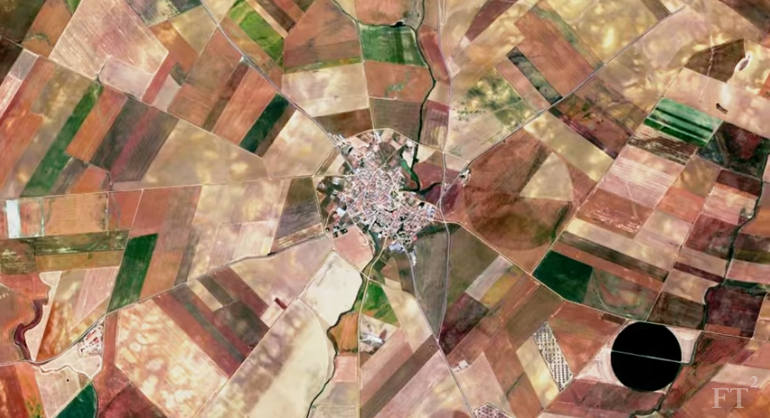It started out as a glorified robotic flying scarecrow. Soon it evolved into a smart farming tool that is changing the way we produce food.
After the founders of US drone maker PrecisionHawk were asked by a vineyard owner if their device could be used to scare away birds, they soon started seeing all sorts of new possibilities.
They realised drones could also be used for crop imaging – and at a bargain price. The conventional method of doing this with manned aircraft can cost $1,000 an hour. For that outlay, a farmer can now buy a drone outright.
Using its simple Unmanned Aerial Vehicles (UAVs) which are equipped with a variety of sensors, PrecisionHawk’s drones can detect everything from irrigation levels to soil variation. They can even identify pest and fungal infestations that would otherwise be invisible.
The drones’ imaging sensors, including infrared and hyper-spectral, depict more than 100 channels of light that can reveal problem areas invisible to the human eye. Sensors can indicate that plants which still appear green to a farmer may, in fact, be under stress. The drones can also track changes in the crop over a long period of time, revealing trouble spots or opportunities for better crop management.
All you need to survey up to 300 acres per flight is the ability to throw the drone into the air. “Every year this technology becomes easier to use, more efficient,” says Neil Gabriel, data engineer at the company.
It is not an exaggeration to say such drones are part of a new way of farming described variously as digital agriculture, Ag 3.0, precision agriculture or data-driven agriculture. Whatever you call it, this is a new era in which information is driving ever more efficient farming.
PrecisionHawk’s machines transmit the data they gather to the cloud where the information is analysed in its algorithm “library” and visualisations are created, giving the farmer invaluable insights that cut costs and boost yields.
Drones such as those from PrecisionHawk are the spear tip for a host of information age innovations and efficiencies in sectors beyond agriculture. Insurance, oil and gas, environmental monitoring and emergency relief are all ripe for offering possibilities. Technology giants such as Google and Facebook, meanwhile, are experimenting with using multiple high-altitude UAVs to enable internet access in regions that lack the infrastructure to extend the web.
Sales of drones to hobbyists and for commercial purposes in the US are expected to rise from 2.5 million in 2016 to seven million in 2020, according to the Federal Aviation Authority.
The Association for Unmanned Vehicle Systems International, a non-profit organisation dedicated to advancing the use of drones, estimates that they could deliver economic benefits worth more than $80bn in the US alone over the next decade.
The total potential value of drone-powered solutions in all applicable industries is significant—more than $127 billion globally, according to a recent analysis by PwC, the professional services firm.
More important, the new capabilities they offer have the potential to transform lives.
“Imagine if we could find new sources of clean drinking water for the millions of people who need it, or track the effects of Climate Change giving agriculture the tools to adapt,” says Gabriel.
“We have developed the ability to see the world in a way that was science-fiction even five years ago.”





































